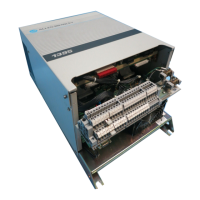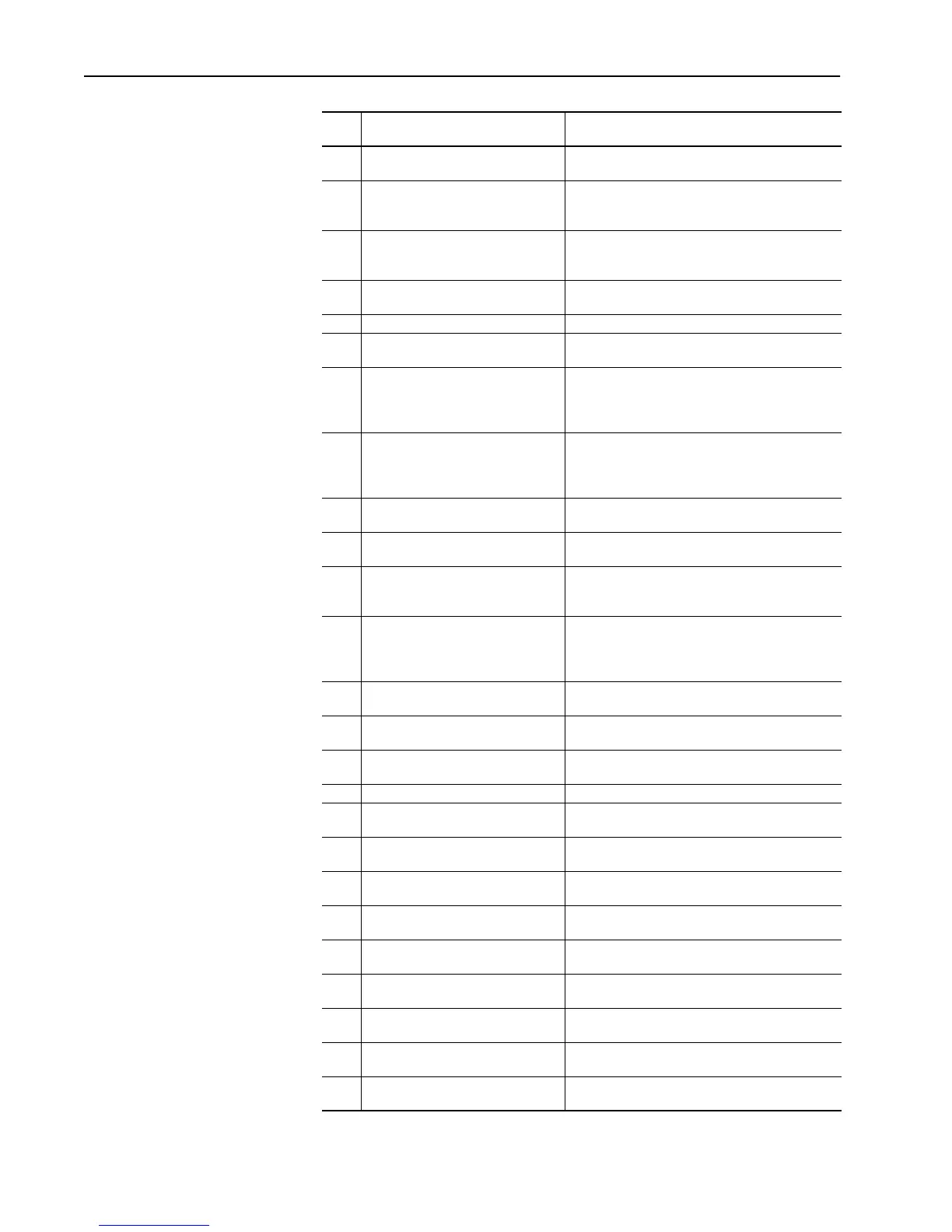6-2 Test Points
15 0 to +5V DC square wave ENCA signal indicating the frequency of the A
channel encoder feedback.
17 +5VDC when phase loss exists. 0V DC
when no phase loss exists.
PHASELOSS signal used as input to the phase loss
latch circuit, the output of which is sent to the drive
logic.
19 0V DC when measured with respect to
TE ground.
Analog ground test point. All analog signals on the
Main Control Board must be measured with respect
to analog ground.
20 +1.5V DC to +3.0V DC for nominal
value.
POWERSUPPLY signal used to monitor the status of
the DC supply voltages.
21 DC volts between 0 and +10V DC. DC voltage representing armature voltage feedback.
23 0 to +5V, 6 pulse Pulses representing 4x encoder frequency in reverse,
otherwise 0.
24 Full wave rectified DC volts between 0
and –3V DC single wave.
IFFB signal from Power Stage Interface represents
field current feedback as sensed by FCT. –3V DC
equals the maximum value of the range specified by
the J1 jumper position.
25 DC voltage between 0 and +5V DC. DC voltage representing field current feedback
derived from the IFFB signal. DC voltage scaling is
set so 3.0V DC represents maximum value of the
range specified by the J1 jumper position.
26 DC voltage between 0 and +5V DC. DC voltage representing armature voltage feedback.
2.5V DC equals 0V DC armature voltage feedback.
27 DC voltage between 0 and +5V DC. DC voltage representing armature voltage feedback.
TP 26 filtered.
28 0 V DC when no AC overcurrent exists.
+5 V DC when an AC overcurrent
exists, unlatched.
OCAC signal used as a logic input to the overcurrent
latch circuit and to the drive logic.
29 0V DC when overcurrent latch circuit is
not latched. +5V DC when overcurrent
latch circuit is latched
AC and DC overcurrent signals used as input to the
drive logic. Once an overcurrent condition has
occurred, the output of the latch circuit is held high
until a drive reset has occurred.
30 0 to +5V square wave with varying
period
SYNCHAB (NOT) signal used as input to the
synchronizing circuit to determine phase rotation.
31 +5V DC when contactor is open. SYSTRIP signal used to open Main Contactor when
overcurrent has been sensed.
33 0 to +5V square wave with varying
period.
Signal used to reset the charge balance current
feedback circuit used for armature current feedback.
34 0 when resetting, +5V DC for charging. Armature current integrator reset signal.
35 0 to 5V DC Pulse 4 times encoder frequency (signal not direction
sensitive).
36 0 to 5V DC Pulse 4 time encoder frequency signal in forward direction,
0 in other cases.
37 +5V DC when overcurrent latch circuit
is not latched. 0V DC when latched.
Inverse of OVERCURRENT signal measured at
TP29. Used as input to the system inhibit circuit.
38 0 to +5V DC square-wave representing
the inverse of the line D to C waveform.
SYNCHBC (NOT) signal used as input to the
synchronizing logic to determine phase rotation.
39 0V DC when system operation is not
inhibited. +5V DC when inhibited.
SYSINHIBIT signal used in drive logic to open DC
contactor.
41 0 to +5V DC. Trip Point at 2.6V DC. 24V DC power supply sense. Drive faults at less than
2.6V DC.
43 0V DC when coast stop command is
not received. +5V DC when received.
ECOAST signal used in drive logic to control
operation after coast stop command.
51 +5, +0.02V DC when measured with
respect to TP52.
Digital circuit power supply voltage.
52 0V DC when measured with respect to
TE signal ground.
Digital Ground. All logic signals must be measured
with respect to TP52.
Test
Point Normal Value Description
Aotewell Ltd industry-mall.net

